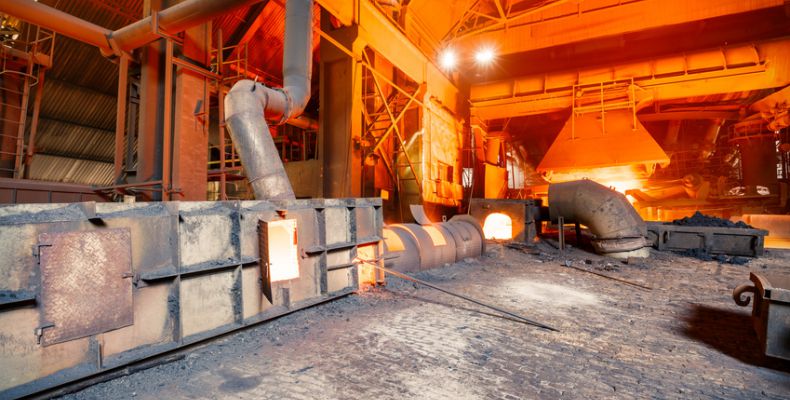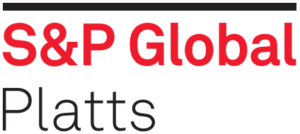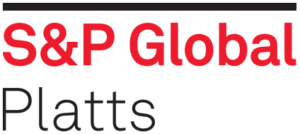
EC approves €6.9 billion state aid for H2 infrastructure
The European Commission approved on Thursday €6.9 billion ($7.4 billion) in state aid funding for hydrogen infrastructure-related projects in seven EU countries, Kallanish reports.
The so-called IPCEI Hy2Infra scheme was planned by France, Germany, Italy, the Netherlands, Poland, Portugal and Slovakia. It awards 32 companies, including five SMEs, and 33 projects in areas of electrolysis, pipelines, storage and handling terminals.
“While the renewable hydrogen supply chain in Europe is still in a nascent phase, Hy2Infra will deploy the initial building blocks of an integrated and open renewable hydrogen network,” comments Margrethe Vestager, EC vice president in charge of competition policy. “This IPCEI will establish the first regional infrastructure clusters in several member states and prepare the ground for future interconnections across Europe, in line with the European Hydrogen Strategy.”
The public funding is expected to unlock another €5.4 billion in private investments. The projects cover the deployment of around 3.2 gigawatts of electrolyser capacity; construction of 2,700 kilometres of transmission and distribution pipelines; development of 370 gigawatt-hours of hydrogen storage capacity; and construction of handling terminals and port infrastructure to handle 6,000 tonnes/year of liquid organic hydrogen carriers (LOHC).
The electrolysers should be operational between 2026 and 2028, and the pipelines between 2027 and 2029. The timelines will vary depending on locations, projects and companies, but the EC expects overall completion in 2029.
According to the awards list seen by Kallanish, the majority of projects are based in Germany (24). The country had project approvals in all four Hy2Infra workstreams, with 10 for electrolysers and nine for pipelines. Some of the companies granted support include Air Liquide, EWE Hydrogen, Linde, Lingen, Thyssengas, Gasunie, AquaDuctus, VNG and Hydrogenious.
The West Germany cluster, for instance, will have three electrolysers built in the Rhine-Ruhr area. It will be connected to three different pipeline projects and have access to a storage facility. According to Vestager, by mid-2027, the renewable hydrogen produced in the cluster will be supplied to companies operating in the steel, cement, chemical, refining, and mobility sectors. The cluster will also connect to the Dutch national hydrogen network, she notes.
“For a successful roll-out of renewable and low-carbon hydrogen, all pieces of the puzzle need to come together,” adds commissioner Thierry Breton.
The EU has previously approved two other Important Project of Common European Interest (IPCEI) state aid schemes – the Hy2Tech in July 2022 and the Hy2Use in September 2022.
France, Germany, Poland and Portugal included their participation in their Recovery and Resilience Plans, thus can partially fund some of their projects through the Recovery and Resilience Facility. The amount granted to each company and project will be made public by the EC later, once any confidential business secrets are removed from the EC’s decision documents.

Sunfire installs 20-MW electrolysis plant in Finland
German electrolyser manufacturer Sunfire says it has installed Finland’s first industrial-scale electrolysis plant in Harjavalta, with green hydrogen production anticipated to start later this year.
The 20-megawatt pressurised alkaline electrolyser is installed at Finnish green hydrogen developer P2X Solution’s hydrogen plant in western Finland. The project started construction a year ago. At full capacity, the plant will produce 400 kilograms/hour of green hydrogen using wind energy. It will be commissioned in the coming months, according to Sunfire.
The project also has a methanisation plant, which will produce “renewable synthetic methane” from carbon dioxide and green hydrogen, Kallanish learns from a statement.
P2X signed an offtake agreement with Danisco Sweeteners, a unit of US-based International Flavors & Fragrances, for green hydrogen produced from the plant last November. The company will use the green hydrogen at its plant in Kotka, Finland, to reduce carbon emissions during the production of xylitol, a synthesised sugar alternative used in the food industry.
P2X is targeting a total capacity of 1 gigawatt for green hydrogen production by 2031.
“Green hydrogen will play a crucial role in the transformation of the chemical sector,” says Sunfire ceo, Nils Aldag. “We feel privileged to be part of this pioneering project with P2X Solutions, where our pressurised alkaline electrolyser will be operated on an industrial scale. I am especially pleased that our ‘Made in Europe’ electrolysis technology will contribute to Finnish energy history.”
The project has an estimated total investment of €70 million ($75.4m). Of this, €36m was provided by the Finnish government’s Ministry of Economic Affairs and Employment and the Finnish Climate Fund.
Based in Dresden, Germany, Sunfire develops and manufactures electrolysers based on solid oxide electrolyser cell (SOEC) and alkaline technologies. Last September, German energy developer RWE produced the first green hydrogen at its gas-fired power plant in Emsland, Germany, using a 250-kilowatt (kW) SOEC supplied by Sunfire.
Early last year, the company also began the series production of alkaline electrolysers at its Solingen site in Germany.


Stahlwerk Thüringen to connect Unterwellenborn steel mill to German hydrogen network
German steel producer Stahlwerk Thüringen plans to connect the Unterwellenborn steel plant to the country’s expanding hydrogen network, it said Aug. 15.
Under the terms of a memorandum of understanding signed with pipeline system operator Ferngas, Stahlwerk aims to connect its Unterwellenborn plant in Thuringia to the hydrogen network from 2027.
Stahlwerk has been decarbonizing its steel mill operations, with the plant already utilizing 100% renewable energy for green steel production.
The decision to purchase green hydrogen via the grid infrastructure in the future is an important step toward largely decarbonized steel production, the company said.
“We want to take the next step toward the sustainable development of the steel industry and underline our leading role in the application of more environmentally friendly technologies,” said Alexander Stolze, head of purchasing, Stahlwerk. “The connection to the hydrogen network will maintain our competitiveness and strengthen the Thuringian steel mill as a center of low-emission steel production.”
The companies will need to acquire associated permits proving hydrogen operability at the plant and secure approval from the local legislature to operate the hydrogen lines.
Platts, part of S&P Global Commodity Insights, assessed Northwest European hot-rolled coil carbon-accounted steel at Eur735/mt ($803/mt) ex-works Ruhr on Aug. 14, down from a peak of Eur885/mt at the start of July. The Platts European carbon-accounted assessment is for HRC with a maximum 2.1 mt of carbon emissions through steel production and from the supply and processing of feedstocks, covering Scopes 1, 2 and 3.


Germany’s Saarland steel sector to use 200,000 mt/year green hydrogen
Green steel production in Germany’s Saarland state could require up to 200,000 mt/year of renewable hydrogen, the head of Saarland’s hydrogen agency Bettina Hübschen told S&P Global Commodity Insights in a recent interview.
The steel industry in Saarland could account for 150,000-200,000 mt/year of hydrogen, while a further 100,000 mt/year of demand could come from other industry, Hübschen said.
“A lot of companies are now considering switching their production from gas-based heating or from gas-based other processes to either electrification or hydrogen,” Hübschen said. Depending on technological constraints, the switch to hydrogen “is a much smaller investment, because they just need to exchange the burner technology and not the whole furnace.”
Saarland offers a case study of how the steel sector is moving to decarbonize operations, integrating with renewables, gas networks and other potential hydrogen users.
The state is home to Saarstahl and Dillinger steel plants, both owned by holding company Stahl-Holding-Saar (SHS).
SHS is Germany’s fourth-largest steel producer by volume, with annual output of 5 million mt, according to a company presentation.
SHS is planning a 2.5 million mt/year direct-reduced iron plant at Dillinger, which would use large volumes of hydrogen, Hübschen said.
SHS’s production is based on traditional blast furnace technology, although the company has said that by 2030 it wants to produce 3.5 million mt — around 70% of its total output — with lower emissions.
The Saarland Hydrogen Agency was established in May as a state subsidiary, and Hübschen is building a team to develop and implement the state’s hydrogen strategy, starting with a local demand analysis.
The focus is to develop hydrogen projects along the value chain, with infrastructure to connect supply and demand nationally and across borders, and steel plants will be the major offtaker for renewable hydrogen in the region, Hübschen said.
“They have their targets they need to fulfill, and they need to be climate neutral by 2045, and they need to have a certain reduction by 2030 already,” she said. “They can only do it by either cutting production or by switching to hydrogen.”
Coal history
The region in the southwest of Germany, bordering France, is home to a number of coal-fired power plants, and shares existing gas pipeline infrastructure across the border.
Hübschen said the former coal plants made good sites to develop for clean hydrogen production, with high-capacity power grid connections, designation as industrial sites and access to water.
Several gas transmission operators are working on a planned 100-km hydrogen pipeline network, comprising around 70 km of repurposed gas pipes and 30 km of new hydrogen pipelines, to connect the Saar region with France’s Grand Est and Luxembourg.
The MosaHYc (Moselle Saar Hydrogen Conversion) pipeline will transport up to 20,000 cu m/hour (60 MW) of pure hydrogen, connecting regional clean hydrogen production with industrial offtakers in the area, converting pipelines to link the German towns of Perl and Voelklingen with Carling and Bouzonville in France.
Several hydrogen projects in Saarland have applied for state aid under the EU’s Important Projects of Common European Interest scheme, including SHS’s H2SYNgas project, STEAG’s HydroHub Fenne electrolyzers and the TraficHdeux transport infrastructure project.
Hydrogen supplies
Meanwhile, French green hydrogen production company Lhyfe is to develop a 70-MW renewable hydrogen plant in Perl, producing up to 30 mt/d to be delivered into MosaHYc.
However, Hübschen acknowledged that the region would have to import substantial volumes of hydrogen to decarbonize industry while electrolytic hydrogen production ramped up in the coming years.
Local hydrogen supplies from 10-50-MW electrolyzers backed by solar and onshore wind power would play a “niche” but important role, as it would take time to build large-scale supply infrastructure, she added.
Hydrogen supplies are expected to come online around 2027-30, with the price paid highly dependent on the structure of contracts to be negotiated, she added.
Steel decarbonization
Hydrogen is used to convert iron oxide into metallic iron, replacing natural gas in the DRI process. Blast furnaces, by contrast, use mainly met coke and other coal-based fuels to convert iron ore. Metallic iron products are then processed into steel.
SHS plans to decarbonize progressively by 2045, commissioning its Dillingen DRI plant by 2030 and using two electric arc furnaces in Voelklingen and Dillingen with around 3.5 million mt/year crude steel capacity, and closing one blast furnace, with CO2 emissions reductions of around 55%. Hydrogen demand in this phase could be 55,000 mt/year.
The company plans to commission a third EAF by 2045 at the latest, with capacity of around 1.2 million mt/year of crude steel.
Hübschen said the upfront investment costs for steel plants to switch to DRI and EAF processes were high, in the region of Eur1 billion ($1.1 billion) for a DRI plant, plus there was a large cost arising from hydrogen purchases.
“They need to invest billions of euros to be hydrogen ready and then to pay a high price for the hydrogen,” she said.
Platts, part of S&P Global Commodity Insights, assessed the cost of producing renewable hydrogen via alkaline electrolysis in Europe at Eur5.91/kg ($6.46/kg) Aug. 14 (Netherlands, including capex), based on month-ahead power prices. Proton exchange membrane electrolysis production was assessed at Eur6.96/kg, while blue hydrogen production by steam methane reforming (including carbon, CCS and capex) was Eur2.95/kg.
Hübschen noted blue hydrogen could be an option for Germany, and while French nuclear-powered hydrogen production would not be acceptable to German steel producers, nuclear electricity generation could power German EAFs.
Platts assessed Northwest European hot-rolled coil carbon-accounted steel at Eur735/mt ($803/mt) ex-works Ruhr, down from a peak of Eur885/mt at the start of July. The Platts European carbon-accounted assessment is for HRC with a maximum of 2.1 mt of carbon emissions through steel production and from the supply and processing of feedstocks, covering Scopes 1, 2 and 3.
Author James Burgess


